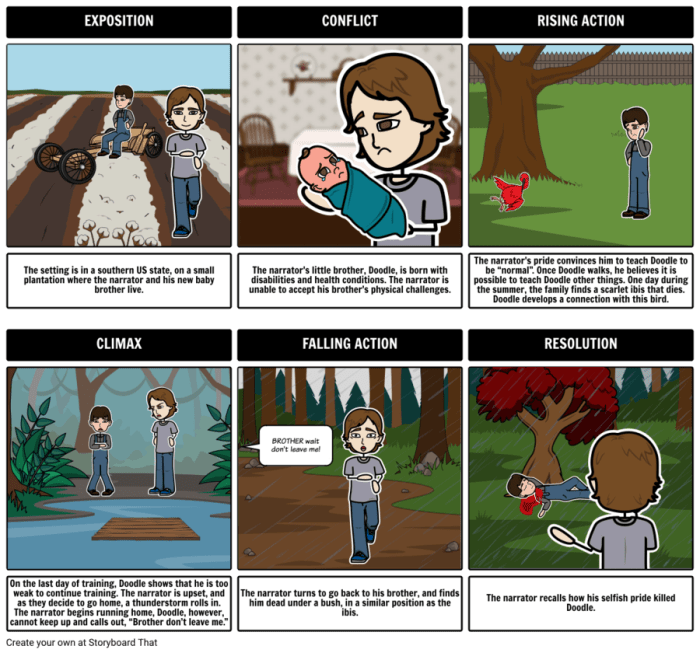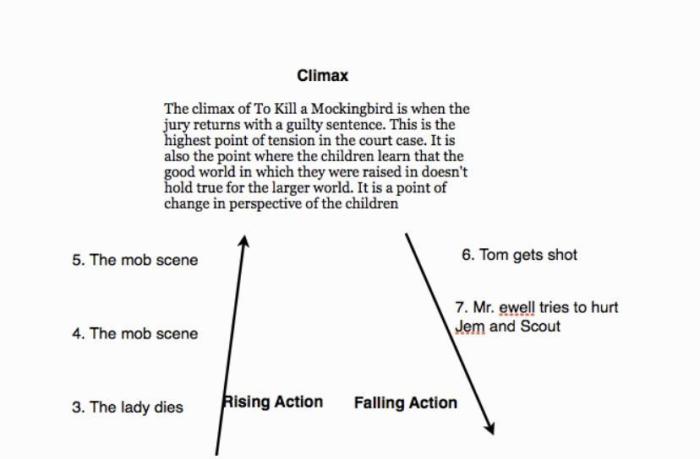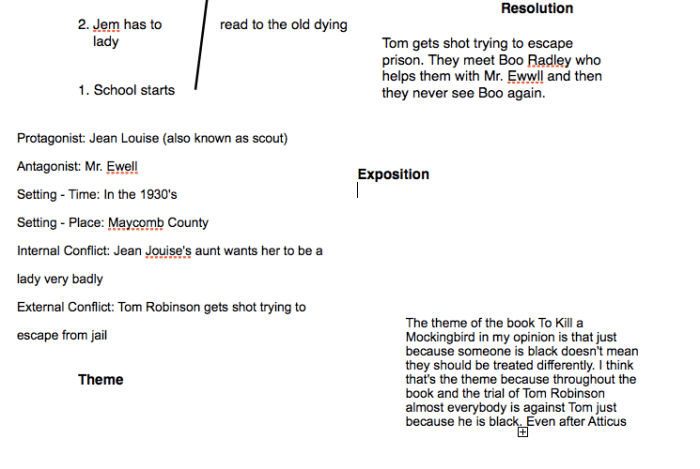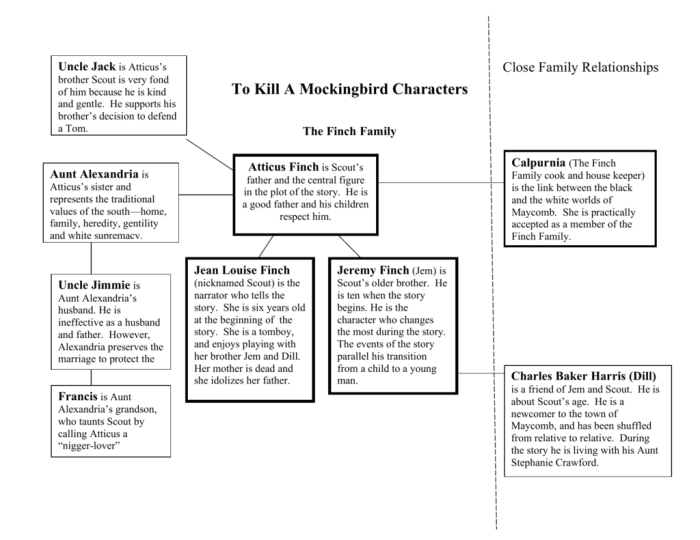Plot chart for to kill a mockingbird – Embark on an in-depth analysis of “To Kill a Mockingbird” through its comprehensive plot chart, providing a structured guide to the novel’s key events, character development, and literary significance.
This plot chart serves as an invaluable resource for students, scholars, and avid readers seeking to delve into the complexities and enduring themes of Harper Lee’s masterpiece.
Key Plot Elements
To Kill a Mockingbird follows the story of Scout Finch, a young girl living in the American South during the 1930s. The novel’s plot is driven by the trial of Tom Robinson, a black man falsely accused of raping a white woman.
Major Events and Turning Points
- The trial of Tom Robinson
- The death of Tom Robinson
- The revelation of Boo Radley’s true nature
Conflicts and Resolutions
- The conflict between racial prejudice and justice
- The conflict between childhood innocence and the harsh realities of the world
- The conflict between good and evil
Character Development: Plot Chart For To Kill A Mockingbird

Main Characters
- Scout Finch: The novel’s protagonist, a young girl who witnesses the events of the novel and learns about the complexities of the world.
- Atticus Finch: Scout’s father, a lawyer who defends Tom Robinson and teaches Scout about the importance of justice.
- Tom Robinson: A black man falsely accused of raping a white woman.
- Boo Radley: A mysterious neighbor who is rumored to be a dangerous monster but is actually a kind and gentle man.
Character Evolution
Throughout the novel, the characters undergo significant growth and change. Scout learns about the importance of justice and equality, Atticus learns the limits of the law, and Boo Radley emerges from his self-imposed isolation.
Setting and Atmosphere
Setting
The novel is set in the fictional town of Maycomb, Alabama, during the 1930s. The town is a microcosm of the American South, with its deep-seated racial prejudice and its slow pace of life.
Atmosphere
The novel’s atmosphere is one of mystery and suspense. The reader is constantly aware of the dangers that lurk beneath the surface of Maycomb’s seemingly idyllic facade.
Symbolism and Imagery, Plot chart for to kill a mockingbird
The novel is rich in symbolism and imagery. The mockingbird is a symbol of innocence and justice, while the Radley house is a symbol of mystery and fear.
Themes and Symbolism

Major Themes
- The importance of justice and equality
- The destructive power of prejudice
- The resilience of the human spirit
Symbolism and Allegory
The novel uses a variety of symbols and allegories to explore its themes. The mockingbird is a symbol of innocence and justice, while the Radley house is a symbol of mystery and fear. The novel can also be read as an allegory of the American South, with its deep-seated racial prejudice and its slow pace of life.
Literary Devices

Literary Devices
- Foreshadowing
- Irony
- Humor
Contribution to Meaning and Impact
The novel’s use of literary devices contributes to its meaning and impact. Foreshadowing creates a sense of suspense and anticipation, irony highlights the novel’s themes, and humor provides a much-needed release from the novel’s often-heavy subject matter.
Critical Reception

Critical Reception
To Kill a Mockingbird has been praised by critics for its powerful storytelling, its complex characters, and its exploration of important social issues. The novel has won numerous awards, including the Pulitzer Prize for Fiction.
Impact on Literature and Society
To Kill a Mockingbird has had a profound impact on literature and society. The novel has helped to raise awareness of racial prejudice and its destructive effects. It has also inspired countless other works of literature and film.
Enduring Legacy
To Kill a Mockingbird is a timeless classic that continues to be read and studied by people all over the world. The novel’s themes of justice, equality, and the resilience of the human spirit are as relevant today as they were when the novel was first published.
Common Queries
What is the significance of the trial in “To Kill a Mockingbird”?
The trial serves as a pivotal event in the novel, exposing the deep-seated racism and social injustice prevalent in Maycomb County. It becomes a battleground where the values of justice, equality, and compassion are put to the test.
How does Scout Finch’s perspective shape the narrative of “To Kill a Mockingbird”?
Scout’s childlike innocence and keen observations provide a unique and often poignant lens through which the events of the novel unfold. Her youthful perspective allows readers to witness the complexities of the adult world from a fresh and unfiltered vantage point.
What are the major themes explored in “To Kill a Mockingbird”?
The novel delves into timeless themes such as racial prejudice, social inequality, the loss of innocence, and the importance of empathy and courage. Through its exploration of these themes, “To Kill a Mockingbird” encourages readers to confront and challenge societal injustices.
